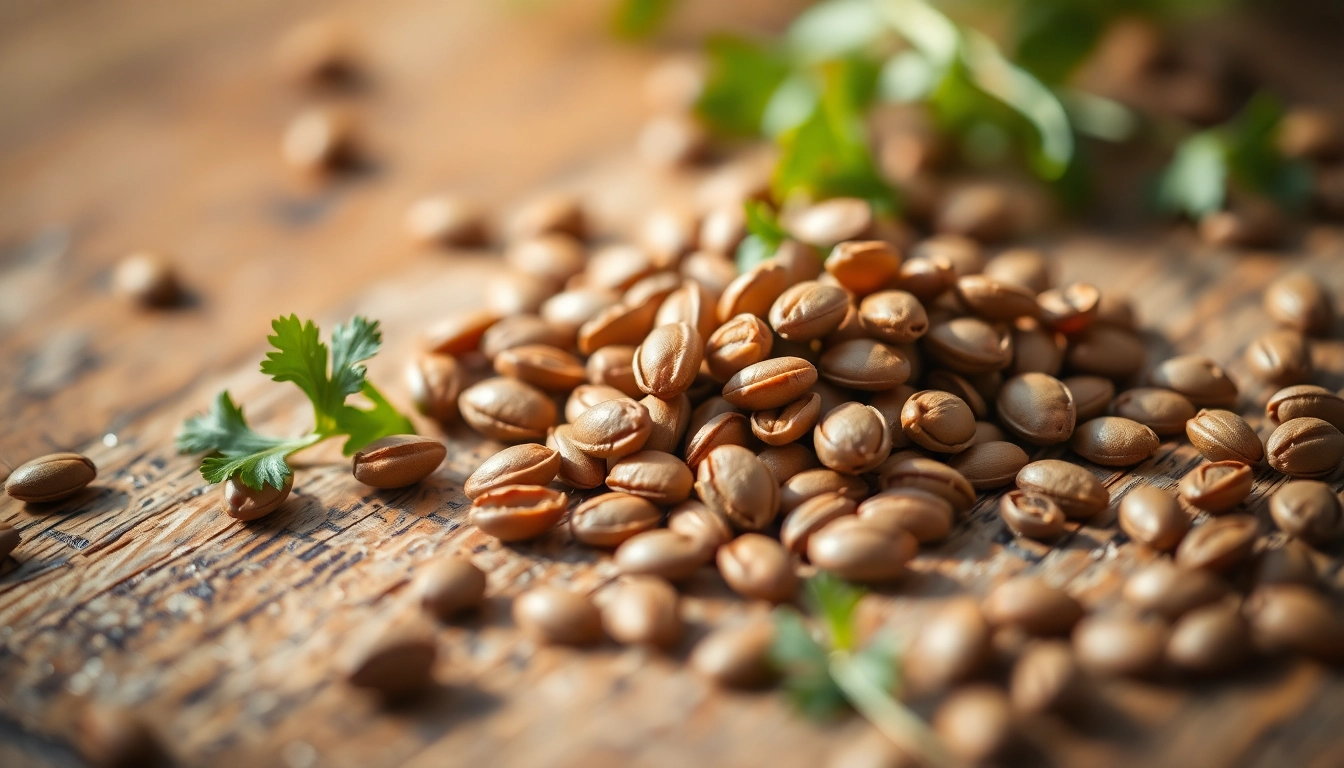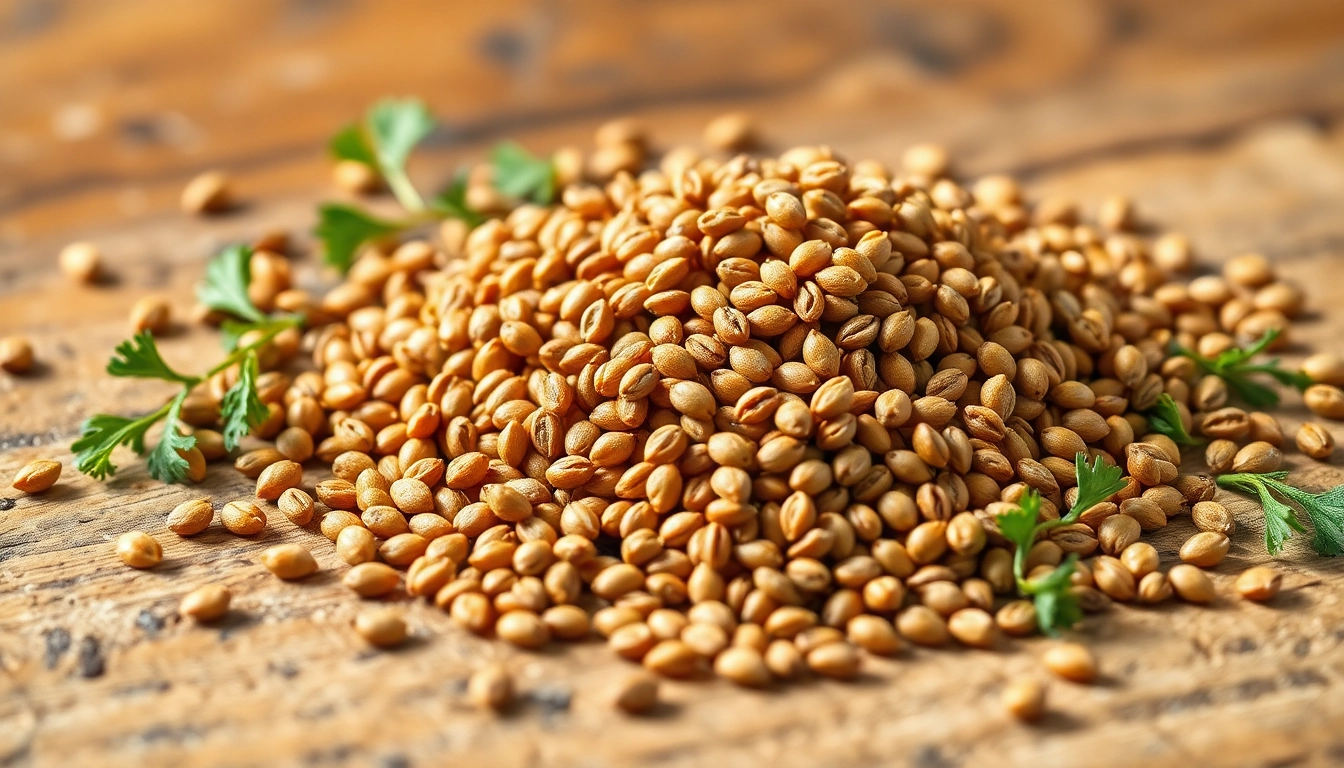Understanding the Quality of Coriander Seeds
When it comes to spices that form the backbone of countless cuisines worldwide, Coriander Seeds hold a prominent place. Their distinctive aroma, delicate flavor, and versatile usage make them a staple in both home kitchens and professional food manufacturing. But not all coriander seeds are created equal. The quality of these seeds profoundly influences the final taste, aroma, and overall product outcome. Recognizing the cues that signify freshness and grade is essential for chefs, food manufacturers, and spice traders alike.
Visual Indicators of Freshness and Grade
High-quality coriander seeds showcase vibrant, uniform color, typically a light brown or tan, free from dark spots or discoloration. They should be plump, firm, and have a glossy surface, indicating that they are fresh and moisture-free. Dull or shriveled seeds suggest age or poor storage conditions. Sorting by size also plays a role: larger seeds tend to have more concentrated flavor and aroma, making them desirable for premium applications. A good practice is to select coriander seeds that are free from impurities such as stones, dust, or adulterants, which can compromise both safety and quality.
Difference Between Organic and Conventional Coriander Seeds
Organic coriander seeds are cultivated without synthetic fertilizers, pesticides, or genetically modified organisms. Consequently, they often deliver a purer, more natural flavor that is highly valued in health-conscious markets. Conventional seeds, while often more economical, may sometimes carry residues from chemical treatments unless properly certified. Choosing between organic and conventional coriander depends on the intended use, target market, and brand positioning. Premium consumers increasingly prefer organic options due to their perceived health benefits and environmental sustainability.
Impact of Seed Quality on Flavor and Aroma
The quality of coriander seeds directly correlates with their essential oil content, which imparts the characteristic citrusy, spicy aroma. Superior quality seeds retain higher amounts of essential oils, resulting in a more robust and authentic flavor profile. Conversely, old or poorly stored seeds tend to lose aroma and pungency over time, leading to bland or muted flavors in cooking or processed foods. For food producers, sourcing high-grade coriander seeds ensures consistent flavoring across batches, enhancing product quality and consumer satisfaction.
Best Practices for Storing Coriander Seeds
Optimal Storage Containers and Environment
Proper storage is vital to preserve coriander seed quality. Airtight containers made of glass, stainless steel, or high-quality food-grade plastic are ideal for preventing moisture ingress and protecting against environmental factors. The storage area should be cool, dry, and dark, ideally maintained at temperatures below 25°C and relative humidity under 60%. These conditions minimize the risk of mold, insect infestation, and oxidation, which can degrade seeds’ aroma and flavor. Regular inspection and cleaning of storage facilities are crucial to maintain optimal conditions.
Signs of Spoilage and How to Avoid Them
Indicators of compromised coriander seeds include musty or sour odors, presence of mold, discoloration, and the appearance of insects or larvae. Seeds that feel excessively oily or sticky might have absorbed moisture, leading to spoilage. To avoid these issues, always ensure proper drying before storage, maintain clean storage environments, and utilize desiccants or oxygen absorbers when necessary. Implementing a first-in, first-out (FIFO) inventory system also reduces the risk of storing old or deteriorated stock.
Maximizing Shelf Life Without Losing Potency
For maximum freshness, coriander seeds should ideally be consumed within 6–12 months of harvest. To extend shelf life, vacuum packing or nitrogen flushing can be employed, especially for export quality coriander seeds. Freezing is generally not recommended due to condensation risks upon thawing. Consistent storage conditions, proper packaging, and avoiding exposure to heat, light, and humidity are key factors to maintaining the seeds’ potent aroma and flavor over time.
Health Benefits and Nutritional Value
Antioxidant Properties of Coriander Seeds
Coriander seeds are rich in antioxidants, including polyphenols and flavonoids, which combat oxidative stress in the body. Regular consumption of high-quality coriander can help neutralize free radicals, reducing inflammation and lowering the risk of chronic diseases such as cardiovascular disorders and certain cancers. Scientific studies have verified the presence of bioactive compounds that contribute to these health benefits, making coriander not only a flavorful addition but also a functional food component.
Incorporating Coriander Seeds into a Healthy Diet
Coriander seeds can be incorporated through grinding into powders, infusing teas, or directly adding to dishes during cooking. They enhance the nutritional profile of salads, curries, soups, and roasted vegetables. Ground coriander can be used in homemade spice blends or as a finishing touch on baked goods. Their mild, nutty flavor complements a wide range of ingredients, making them a flexible addition to any health-conscious eating plan.
Traditional Medicinal Uses and Modern Science
Historically, coriander seeds have been used in traditional medicine to treat digestive issues, improve appetite, and regulate blood sugar levels. Contemporary research supports these claims, highlighting their capacity to improve digestion, reduce inflammation, and exhibit antimicrobial properties. The seeds’ essential oils are also being studied for their potential in managing metabolic syndromes, further affirming their place in holistic health approaches.
Cooking Techniques Using Coriander Seeds
Grinding and Blending for Different Cuisines
Grinding coriander seeds releases their essential oils, intensifying their flavor and aroma. For best results, lightly toast the seeds before grinding to enhance their nutty notes. Ground coriander is a staple in spice blends such as garam masala or curry powder, and in marinades or salad dressings. For dishes requiring a more subtle infusion, crushed whole seeds can be added during cooking, allowing their flavor to mellow and develop gradually.
Complementary Spices and Flavor Pairings
Coriander pairs well with cumin, cardamom, turmeric, and chili, creating a balanced, warm flavor profile essential in Indian, Middle Eastern, and Mediterranean cuisines. It also enhances the taste of garlic, ginger, and citrus, offering a fresh, bright accent. Experimenting with spice combinations can unlock new culinary horizons and elevate the complexity of your dishes.
Recipes Highlighting Coriander Seeds’ Versatility
Some popular recipes include coriander-embellished lentil soups, spice crusts for roasted meats, and aromatic rice pilafs. A simple yet flavorful preparation involves dry roasting coriander seeds, grinding them into powder, and mixing with sautéed vegetables and lentils. Additionally, coriander seed-infused oils serve as excellent bases for salad dressings or dipping sauces, showcasing its culinary versatility.
Expert Tips for Using Coriander Seeds in Commercial Food Production
Quality Control and Sourcing Strategies
Partnering with certified and reputable spice manufacturers like Spice Nest ensures access to consistently high-grade coriander seeds. Implementing rigorous quality checks, including sensory analysis and laboratory testing for phytochemicals and contaminants, is crucial. Establishing long-term relationships with trusted suppliers will help sustain supply chain integrity and product consistency.
Enhancing Product Flavor Profiles with Coriander Seeds
In industrial applications, coriander can be used to boost flavor complexity in spice blends, soup concentrates, pickles, and ready-to-eat meals. Proper roasting and grinding techniques improve extraction of flavor compounds, while precise dosing ensures uniformity. Combining coriander with complementary ingredients such as garlic or chili can create distinctive flavor profiles aligned with target consumer preferences.
Packaging and Labeling Best Practices for Export
For export, coriander seeds should be packaged in moisture-proof, tamper-evident packaging with clear labels indicating origin, processing date, nutritional information, and certifications. Compliance with international standards like ISO, HACCP, and organic certifications enhances market acceptance. Using eco-friendly packaging options can also appeal to environmentally conscious consumers.

